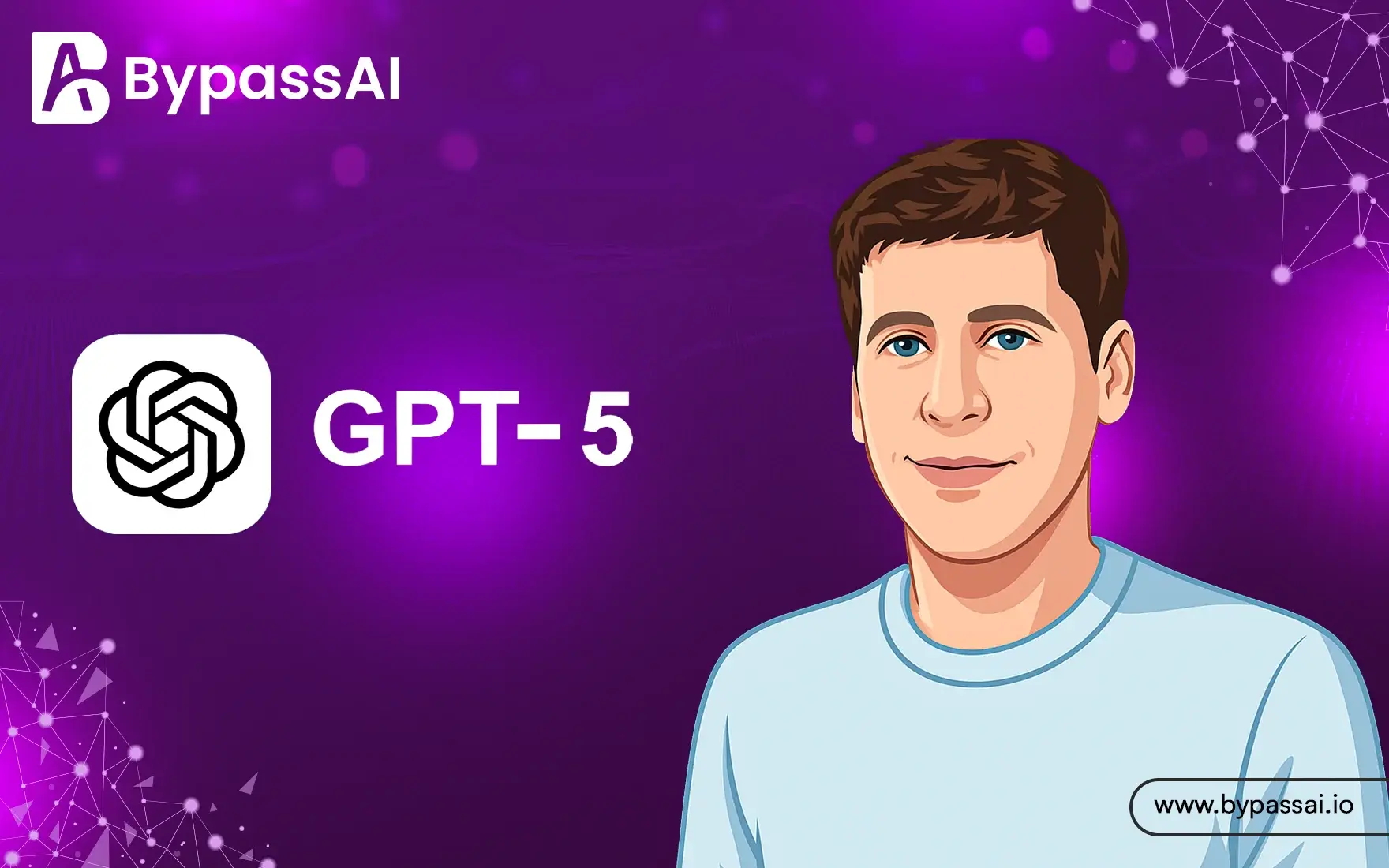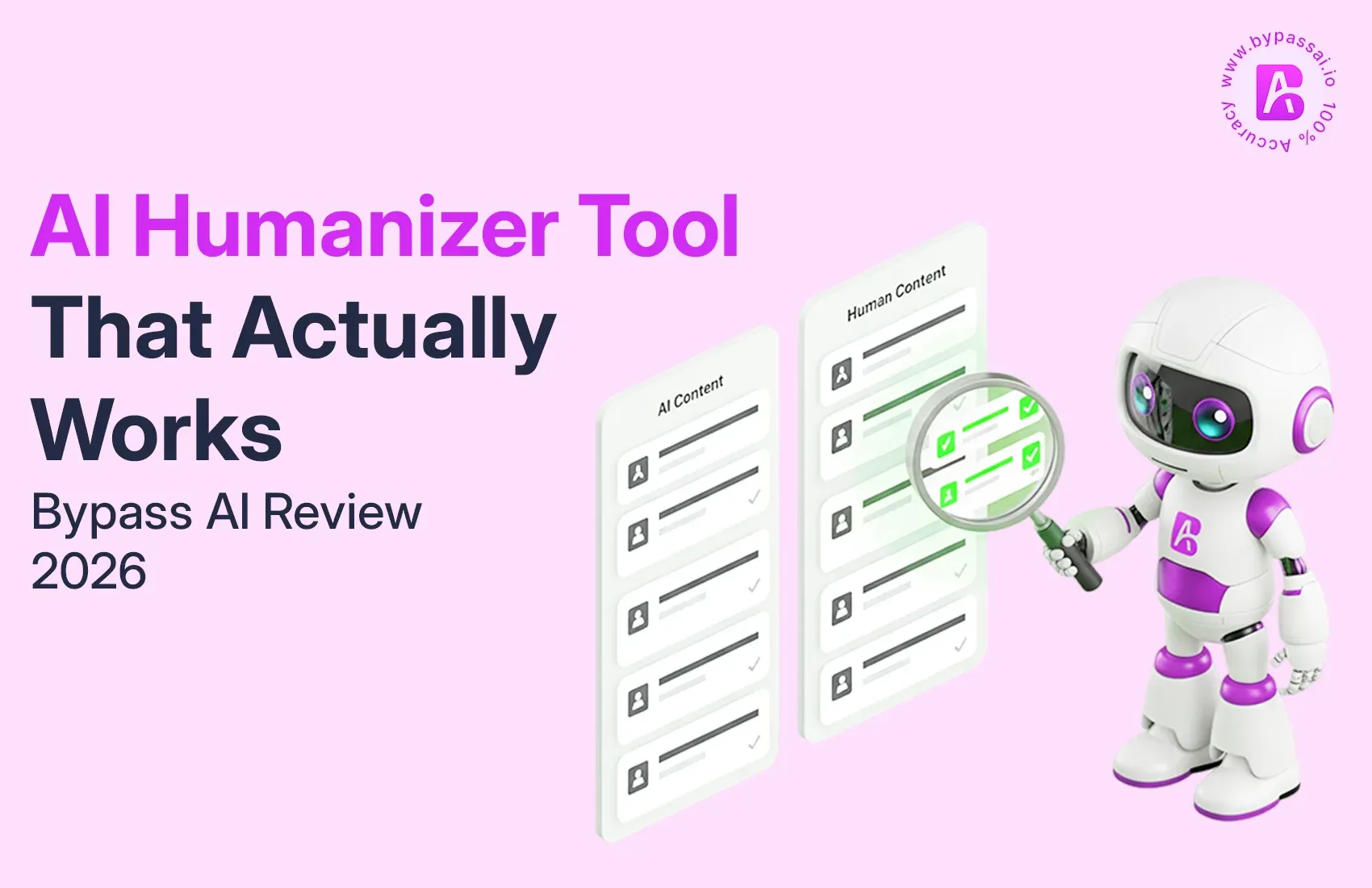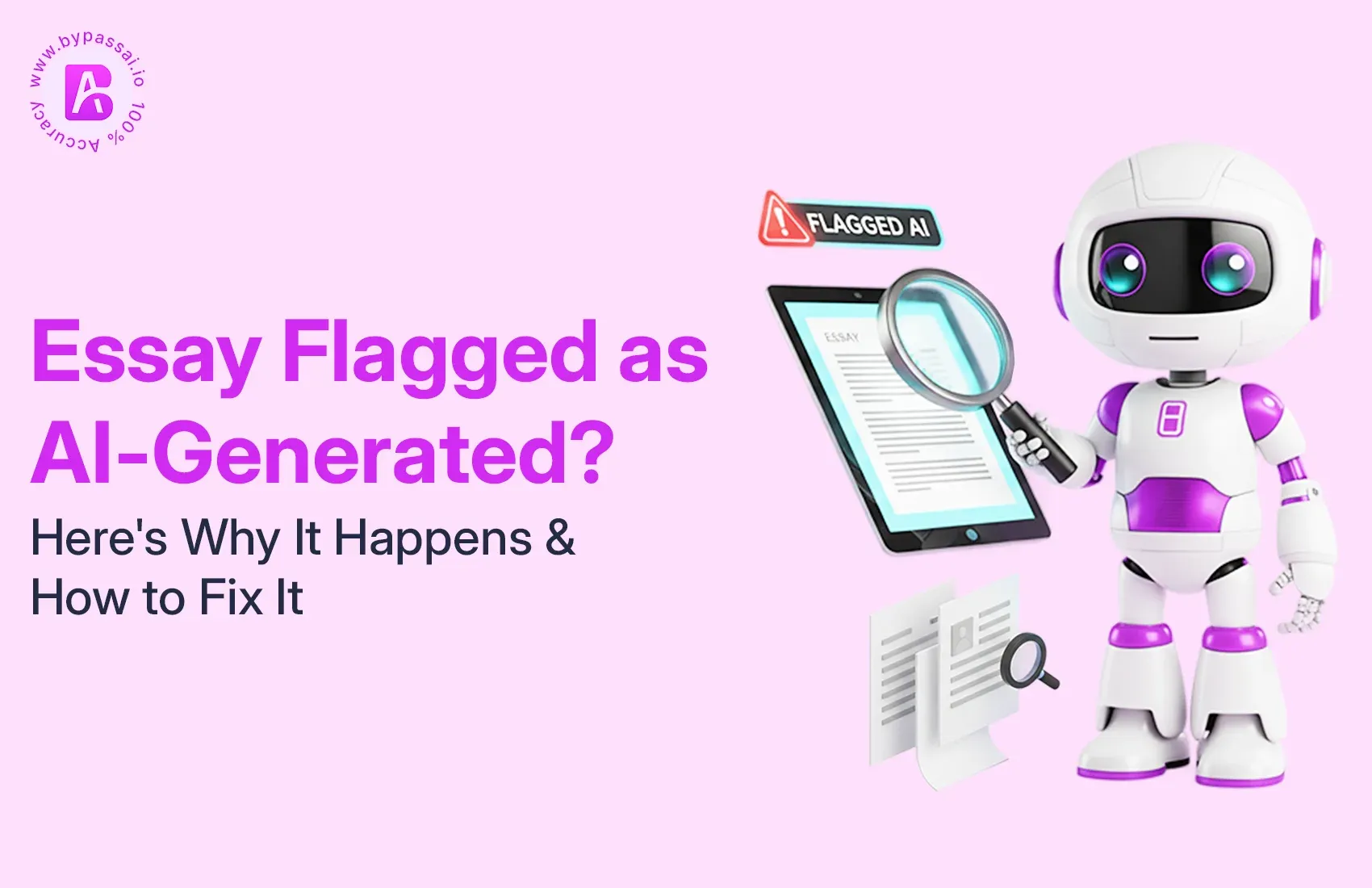Sign In
Welcome to Bypass AI! Sign in to continue your exploration of our platform with all its exciting features.
Forgot Password?
Don’t have an account ? Sign up
Sign Up
Embrace the Future with Bypass AI! Sign up now and let's rewrite the possibilities together.
You have an account ? Sign In
Enter OTP
We’ll send you an OTP on your registered email address
Back to Login
Forgot Password
We'll Send You An Email To Reset Your Password.
Back to Login
Enter OTP
We'll send you an email to reset your password.
Back to Login
Confirm Password
Please enter your new password.
TABLE OF CONTENTS
Quick Summary
What's the advantage of GPT-5 to GPT-4o?
How Can I Access GPT-5?
How Well Does GPT-5 Perform?
Preliminary tests demonstrate significant improvements in:
Features of ChatGPT-5
Comparison Table: GPT-5 vs GPT-4o vs GPT-4 Turbo
What Are the Different Models in GPT-5?
Potential Business Applications and Use Cases
Benefits of the Power of ChatGPT-5 for Your Organization
Possible Challenges and Limitations
Conclusion
FAQs
is now dubbing GPT-5. A long-awaited moment in the journey of artificial intelligence development. For months, we have speculated and waited for this moment. OpenAI states that this is "our smartest, fastest, most useful model yet, with built-in thinking that puts expert-level intelligence in everyone's hands."
This release is not just a new update, it marks a true paradigm change in how we use AI across the board: reasoning capabilities have developed to a level we never thought possible; Unified multimodal unified experience; significant balancing limitations we all experienced with past versions as well as new features that could change how business is done, creativity is unlocked and make day to day tasks more productive for everybody.
In this guide, we will cover everything you need to know about GPT-5, from the announcement date to notable features, improved performance, pricing structure, and applications for all users, businesses, and amateurs.
Quick Summary
What is GPT-5?
GPT-5 is OpenAI's most advanced language model, featuring unified intelligence systems, enhanced reasoning capabilities, and improved multimodal functionality that surpasses all previous GPT versions.
GPT-5 Release Date:
OpenAI officially launched GPT-5 on August 7, 2025, making it available to ChatGPT users and through the API platform. History of OpenAI's GPT Versions and Launch Dates:
- GPT-1: June 2018
- GPT-2: February 2019
- GPT-3: June 2020
- GPT-3.5: March 2022
- GPT-4: March 2023
- GPT-4o: May 2024
- GPT-5: August 2025
What's the advantage of GPT-5 to GPT-4o?
1. The structured reasoning
The main difference in GPT-5 is its new router that switches automatically in real time based on the type of conversation (simple questions to deeply reasoning with complex conversations), the complexity of the task, the need to use multiple tools, and the user's intent in that moment. By having a router managing the performance, users do not have to manually choose a model so that they can maximize performance against any specific task they are trying to complete.
2. Multimodal capabilities
The key improvements to multimodal processing from GPT-4 to GPT-5 result in substantially improved synthesis of text imagery, audio, and video with enhanced capability to situate context concerning time and user intent among different types of content. This would allow the platform to create a more seamless interaction among different types of content in a more unified way.
3. Unified model
GPT-5 is a model designed as a "Unified Intelligence System" that combines multiple specialized models (into a single parameter space). By creating a unified architecture that draws on all of its learning, it enhances speed and flexibility, whereby the user has the right tool for each task without having to demonstrate technical understanding of variant models.
How Can I Access GPT-5?
GPT-5 is now available through multiple channels: ChatGPT Interface: Available for all ChatGPT users API Access: Released in OpenAI's API platform for developers Microsoft Integration: Incorporated into Microsoft 365 Copilot and Microsoft Copilot Enterprise Solutions: Available through OpenAI's enterprise offerings
How Well Does GPT-5 Perform?
According to OpenAI CEO Sam Altman, GPT-5 is the "best model around" with notable improvement across all performance metrics, including more precise accuracy in complex reasoning; faster response time for basic questions; and more reliable automation of nuanced instructions.
Preliminary tests demonstrate significant improvements in:
- Math reasoning and problem-solving
- Coding and debugging software
- Creative writing and content generation
- Accuracy of language translation
- Scientific and technical reasoning
Features of ChatGPT-5
ChatGPT-5 brings advanced reasoning, multimodal support, better context, real-time adaptation, stronger safety, and pro-level coding capabilities.
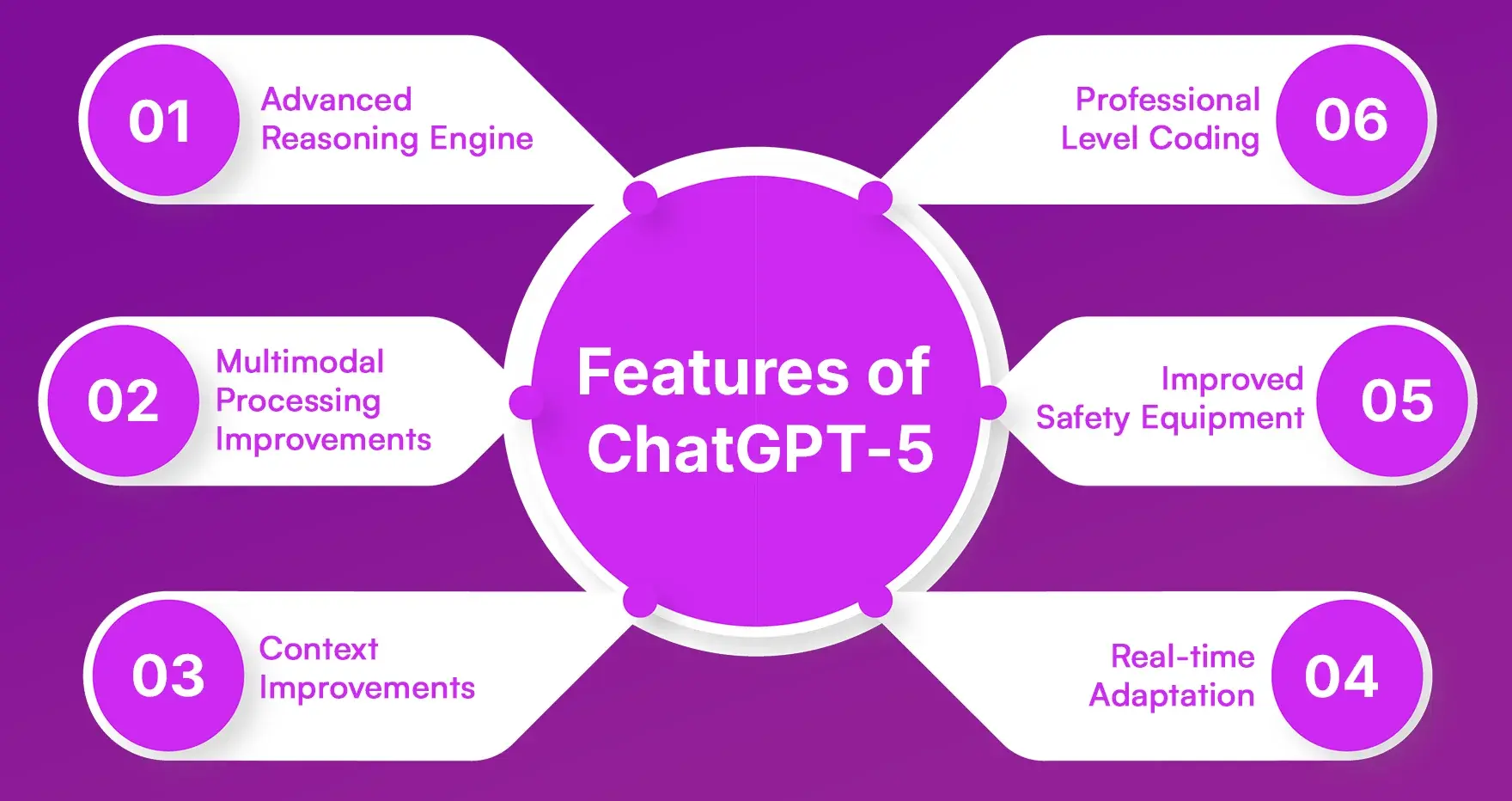 1. Advanced Reasoning Engine: The prompt complexity will correlate with the depth of reasoning.
1. Advanced Reasoning Engine: The prompt complexity will correlate with the depth of reasoning.
2. Multimodal Processing Improvements: Now handles text, images, audio, and videos automatically.
3. Context Improvements: Pattern recognition for context in conversations; retain and use context better.
4. Real-time Adaptation: Adaptive switching between response formats for best performance.
5. Improved Safety Equipment: More content filtering and bias mitigation capabilities.
6. Professional-Level Coding: Optimized for coding and agentic tasks as much as possible.
Comparison Table: GPT-5 vs GPT-4o vs GPT-4 Turbo
| Feature | GPT-5 | GPT-4o | GPT-4 Turbo |
|---|---|---|---|
| Parameters | Undisclosed (Enhanced) | ~1.8 trillion | ~1.8 trillion |
| Context Window | Extended | 128K tokens | 128K tokens |
| Multimodal | Advanced unified | Basic | Text + Images |
| Reasoning | Adaptive depth | Standard | Standard |
| Speed | Optimized routing | Fast | Moderate |
| API Cost | Competitive | Moderate | Higher |
| Safety Features | Enhanced | Improved | Basic |
What Are the Different Models in GPT-5?
OpenAI has four primary models of GPT-5 for different levels of performance and cost:
- GPT-5 - The full-fledged model with maximum reasoning capabilities for complex, enterprise use cases.
- GPT-5-Mini - Reasonable performance and cost, great for most business applications and content creation.
- GPT-5-Nano - Ultra-lightweight version focused on speed, for high single-variable applications where speed and response time are critical.
- GPT-5-Chat - The conversational model that powers the basic experience of ChatGPT, designed primarily for general dialogue and customer support.
Each model has different trade-offs in regard to performance, speed, and cost so that developers can choose the best model for their use case.
Potential Business Applications and Use Cases
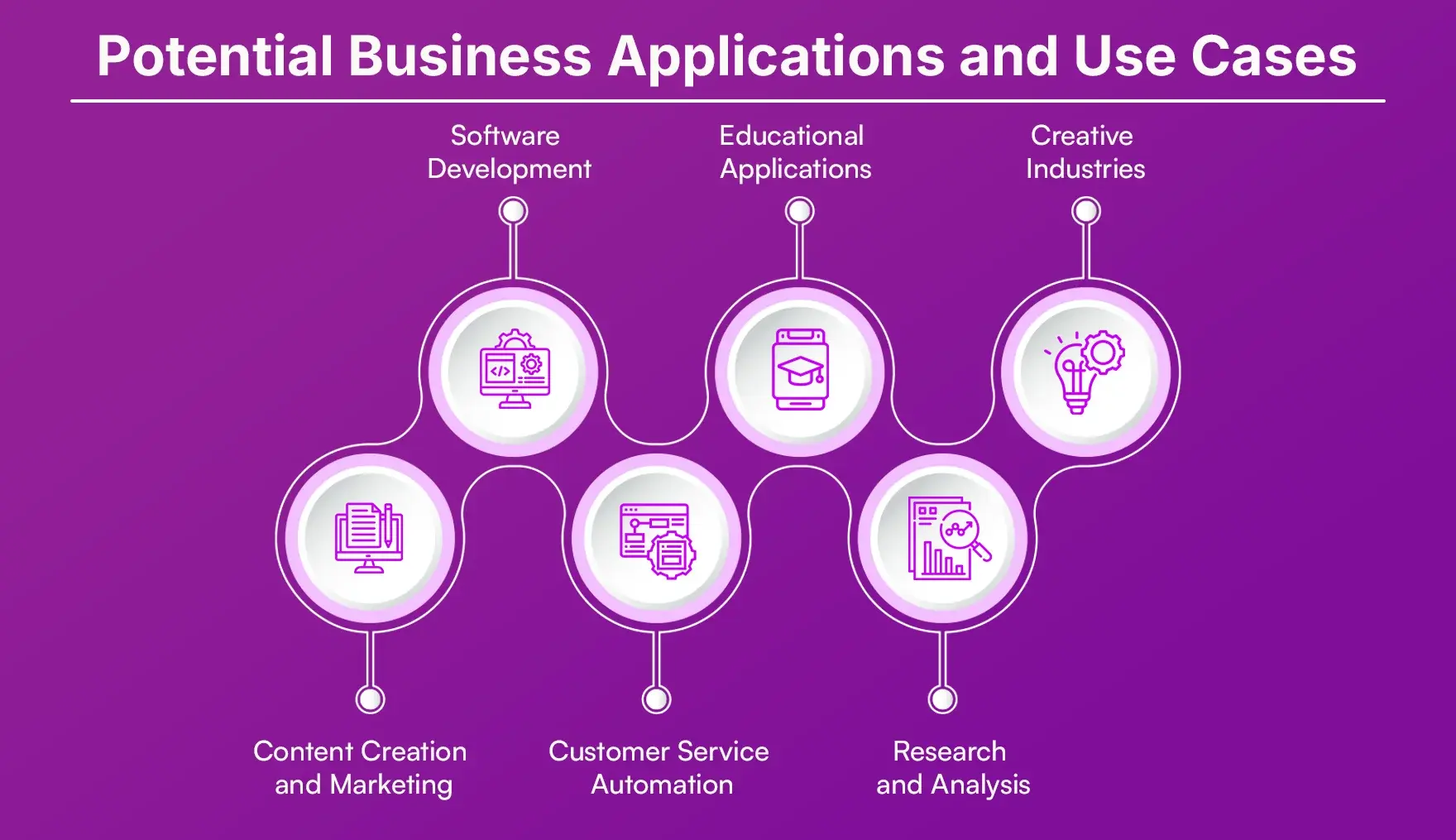
1. Content Creation and Marketing
With its advanced creative abilities, GPT-5 is a perfect fit for generating high quality marketing copy, social media content, and brand messaging. GPT-5's enhanced context awareness and audience understanding will allow for a more targeted and effective communication.
2. Software Development
GPT-5 will be effective with anything regarding code and agentic tasks, offering developers accurate code generation, better debugging suggestions, and improved documentation suggestions. Advanced reasoning capabilities will enhance GPT-5's ability to address more complex programming challenges.
3. Customer Service Automation
The improvements will make GPT-5 a good choice for more sophisticated customer service chatbots, with advanced conversational capabilities, advanced context remembrance, and the ability to carry on more natural conversations while answering difficult customer inquiries.
4. Educational Applications
The adaptive reasoning of the model will provide high-quality personalized tutoring experiences, customized learning materials, or intelligent assessment tools that adapt to learning styles and pace.
5. Research and Analysis
The improved analytical capabilities would allow researchers to have improved help creating literature reviews, interpreting data, generating hypotheses, or solving complex problems in virtually any science or academia-related discipline.
6. Creative Industries
Whether working on scriptwriting, storytelling, songwriting, or conceptualizing visual art, GPT-5's capabilities for improved creative reasoning represent exciting possibilities for artists or content creators interested in collaborating or extending their work through AI.
Benefits of the Power of ChatGPT-5 for Your Organization

1. Improved Productivity
GPT-5 revolutionizes enterprise AI, automation, and workforce productivity by better completing routine tasks, and leveraging reasoning and multimodal assistances on more complex business projects, and therefore completing it more intelligently. Included intelligence features combine existing routine tasks and weave them into an integrated user experience and avoiding repositioning between several separate tools and models used.
2. Cost efficiency
The performance advantages of the integrated architecture can lead businesses to eliminate multiple specific AI tools, leading to AI tech savings and allowing organizations to achieve superior performance in different business functions.
3. Competitive Advantages of Our GPT-5 AI Business Model
New adopters of GPT-5 establish cutting-edge AI capabilities to offer differentiated products and services and/or to apply differentiation to their internal processes. The reasoning and multimodal capabilities offer innovative applications that were previously impossible to capitalize on.
4. Integration Capabilities
Microsoft demonstrating the user-friendly experience and integrating GPT-5 into consumer, developer, and enterprise offerings illustrates the inherent flexibility of model integration. This flexibility makes it easier best in best-in-class organizations to apply cutting-edge AI into their existing workflows and respective systems.
Possible Challenges and Limitations
1. Safety and Ethical Issues regarding AI
While improvements to safety protocols have been made, GPT-5's advanced capabilities raise questions regarding responsible AI use, as well as the potential for revised governance in organizations and the potential for malicious use.
2. Bias and Misinformation
OpenAI is trying to combat bias and misinformation with the advanced content filtering system; however, GPT-5's recent advancements raise questions about bias and misinformation, particularly in sensitive applications.
3. Computational Costs
While the advances and unified architecture could lead to improved performance, the technical computational requirements may limit access for small organizations or individuals that do not have the technical capabilities.
Conclusion
GPT-5 is a huge leap in capabilities for AI. It delivers on the promise of bright, adaptable artificial intelligence. As OpenAI's most powerful model to date, it has already fundamentally advanced enterprise AI, automation, and workforce productivity in countless industries.
With a comprehensive intelligence system, advanced reasoning capabilities, and enhanced multimodal capabilities, GPT-5 is more than a simple upgrade to a language model - it's intelligence in the form of a rapidly adaptable AI platform that adapts to the specific needs of the user. For businesses, this opens entirely new opportunities for AI, providing businesses with a competitive advantage, operational effectiveness, and innovation potential.
As we enter this new age of AI capability, businesses should be initiating the process of evaluating how the capabilities of GPT-5 can benefit their strategic plan for the operational realities they face. The early adopter advantage can be significant, but it will also be vital to successfully implement and train staff effectively, along with responsible usage policies and practices.
Whether you are a developer looking for the best source of coding support, an enterprise leader seeking transformational capability for your business, or simply observing the world of AI assumptions, GPT-5 is a window into a world where AI evolved to be an intelligent collaboration partner, rather than just another tool.
FAQs
1. When exactly will GPT-5 launch?
GPT-5's launch happened in August 2025 via ChatGPT, API, and Microsoft integrations, officially and publicly by OpenAI.
2. What will GPT-5 cost?
OpenAI has not provided extensive pricing information yet, but the company has provided information on pricing models that will very likely be competitive with an overall better value, given the efficiency improvements of a unified architecture.
3. What will be the major improvements over GPT-4?
Major improvements will be adaptive reasoning depth, unified multimodal processing, real-time intelligent routing of response modes, improved safety, and superior performance with programming and complex analysis.
4. Will GPT-5 be available through API?
Yes, GPT-5 can be accessed via OpenAI's API platform, and developers and businesses can access GPT-5 and apply in their workflows and applications.
5. What are the hardware demands of GPT-5?
GPT-5 operates on OpenAI's cloud infrastructure. Thus, there are no special hardware needs. Access is through web interfaces, APIs, and integrations.
6. How can businesses prepare for GPT-5?
Businesses can take the following steps to make their organization more savvy for AI. First, assess their AI needs. Then identify opportunities (or use cases). Next, train your staff on best practices for integrating AI. Develop governance structures for responsible AI utilization. Finally, develop pilot programs to begin testing GPT-5's functionality to generate value in the organization's environment.

